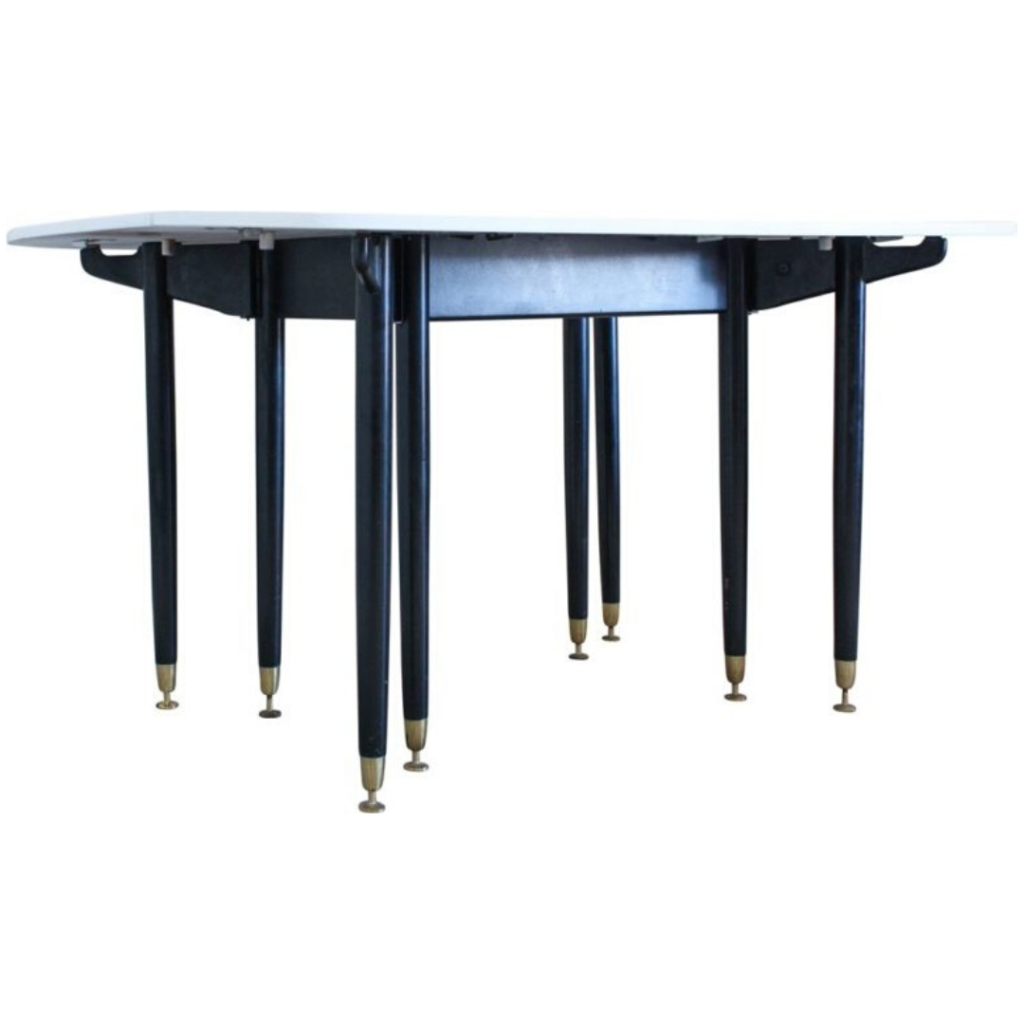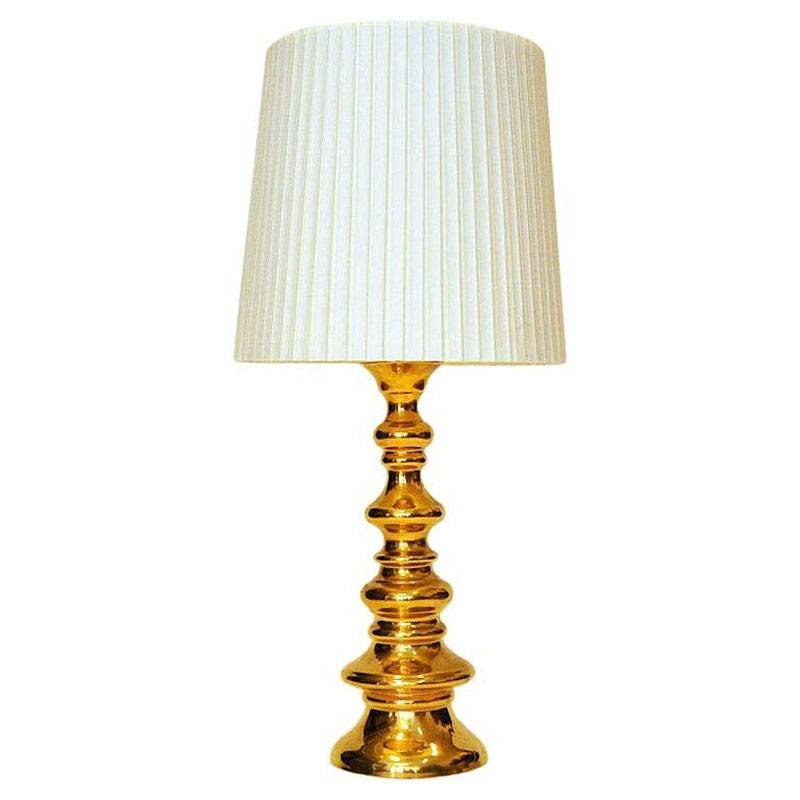I had hoped that...
some Finish design addict would have told the Timo Sarpaneva story, but it did not happen. It saddens me that the growing interest in "what modern was" is concentrated on a few designers and their products. Timo Sarpaneva (and now his memory) is one of those who deserves much more attention than what he has been given, not to honor him...that's top late...but for all the things we can learn from him.
I am including the In memoriam published by Ittala
http://www.iittala.fi/designor/web/iittalacom.nsf/pages/49D5F6ED44203CDA...
and ...
another one from Virtual finland.
http://virtual.finland.fi/netcomm/news/showarticle.asp?intNWSAID=26195
Finlandia
The glass sculptures in the Finlandia Series are absolutely beautiful, like blocks of organic matter diffusing light. Has anyone seen those personally? I think those are the pieces that more completely differentiate TS from Wirkkala - though Wirkkala created a few pieces in that aesthetic as well. TS must have been an incredibly calm and energetic individual. I was hoping someone had a personal experience with him and could add a little color to the picture...
He has moved to the top of my list...
and I had never even heard of him before he was mentioned just after he died. I have frankly never seen ANYONE's work that is as hauntingly beautiful as Sarpeneva's. I have never been to Finland, but I have been to the northern parts of North America and he captures the feel of such places in every one of his pieces in endlessly unprecedented ways. My definition of a genius is not only some one who does not imitate others, but who does not imitate himself. Great genius has two distinct dimensions. First, it is forever working out such rigorous solutions to problems that they seem original, whether elements have been borrowed or not. Second, genius is forever evoking through these artifacts an extremely recognizable, yet difficult-to-put-in-words feeling. Sarpeneva was a giant in my opinion, not because he created widely recognizable icons of design (it seems he did not), but instead because he created designs with this constantly haunting, irreducible feeling. Every generation has a handful of iconographers who become memorable for their forms. The Eames for example. But designers capable of making a body of artifacts capable of invoking such feeling as Sarpeneva are even more rare. Sometimes several generations pass without one appearing.
Rereading what I have just written suggests I need to add just a bit more clarification.
There are many designers who can make us feel. Karim Rashid can make us feel a cotton candy kind of happiness. Wright can make us feel the warmth of a cave with a fireplace, some chambers low and snug and others soaring. Corbu and Mies can make us feel the elegance of abstract rationalism. But these are all rather realms of feeling where words can readily be found to describe what is being expressed in plastic form. What Sarpenva expresses is something much nearer the enigmatic essense of what it means to be human. Shakesepeare, Ibsen, and Checkov were good at getting at this sort of irreducible, bottomlessly deep feeling in their dramas. There are some poets that have done it also. Some painters too. But I have never seen a designer go there consistently. I know what I am about to say may seem presumptuous coming from a layman, but Sarpeneva's designs ARE comparable to what these remarkable artists in other fields mentioned above have achieved. True, he lacks Shakespeare's iconographic dimension, but I would put him up there with Ibsen, or more Sarpeneva's contemporary, Ingmar Bergman. There is great craftsmanship in Sarpeneva's design, as Koen has helped me understand, but there is something more even than that. There is a humanity and sense of beauty lurking within the forms that is breathtaking in its breadth, depth and mystery.
Timo Sarpaneva Obituary from NY Times - pt 1
Timo Sarpaneva, 79, Glassmaker, Dies - New York Times
By DOUGLAS MARTIN
Published: October 10, 2006
Timo Sarpaneva, a Finnish glassmaker whose sleek and adventuresome creations
found their way into art museums, stylish dining rooms and textbooks on design,
died on Oct. 2 in Helsinki, Finland. He was 79.
Jaakko Avikainen/Lehtikuva, via Associated Press
Timo Sarpaneva in 2002. His death was reported by STT, the Finnish news agency,
which did not give a cause of death, The Associated Press said.
Mr. Sarpaneva has been described as the last of a generation of post-World War
II Finns who helped make Scandinavia's clean, simple lines a modern standard. He
worked in ceramics, metal, textile and wood, but glass was his favorite medium
because, he said, he loved to capture light.
He called glass 'magical' in its changeability and malleability, not to mention
expressiveness. His work seemed to contain elements of Finland itself. Critics
said he showed light as if seen from beneath the ice that covers the sea, or in
the living foliage of a forest. His palette had somewhat more color than that of
many previous Scandinavian designers.
In an article in The New York Times in 1994, Rita Reif called Mr. Sarpaneva's
work less exuberant than the free-form bowls and vases of the architect Alvar
Aalto or the industrial designer Tapio Wirkkala, both of whom were Finns. But
she called Mr. Sarpaneva's designs more sensuous in their finishes.
The Washington Post in 1995 remarked that his ability to make big bubbles inside
blown glass had the effect of adding 'something like a fourth dimension to his
work.' He could form molten glass into precise geometric shapes.
His many awards included three grand prizes at the Milan Triennale, which has
been called the Olympics of the design world. His work is in the collections of
many important museums, including the Museum of Modern Art in New York, and
there were several very popular touring exhibitions of his work in the 1990's.
Timo Tapani Sarpaneva was born into a family of blacksmiths and textile artists
in Helsinki on Oct. 31, 1926. His early memories became artistic inspiration: he
said that one of his early hand-molded organic structures, 'Devil's Cradle'
(1951) came from playing with snow and ice as a child. 'At age 8 or 9, I held a
piece of ice in my hand until I had made a hole in it with my warm finger,' he
said.
TS obit, pt2
He was trained as a graphic designer at the Central School of Industrial Design
in Helsinki, the forerunner of the University of Art and Design, and graduated
in 1948. He began working for the iittala Glassworks in 1950 as an independent
designer and head of exhibitions. In 1956, he created the company logo, a
lowercase 'i' in a red circle, for which he won a grand prize in Milan the
following year.
In the 1950's, he introduced color " 'smooth ones,' he said, not 'striking ones' " to iittala. In the 1960's, he developed a method of blowing glass into a
charred wooden mold to create a surface resembling cracked ice: many of his most
popular drinkware designs reflect the icy beverages they hold.
In 1962, he established his own office in Helsinki and began designing for
various companies. For one of them, he created covered casseroles and pans,
ready for use in the oven, on the table or in the refrigerator. For another, he
designed stackable glass bottles with an indentation in the base to fit the lip
of the next bottle; for these, he received the International Design Award.
Outside of glassmaking, Mr. Sarpaneva introduced a computerized process for
textile printing that imprinted the design on both sides of the fabric at the
same time.
Mr. Sarpaneva is survived by his wife, Marjetta Svennevig, and four children.
A surprising inspiration for his work was sound, he sometimes said. In 2001, in
an interview with The Independent of London, he spoke of the message of his
'Song of the Troll' mug and plate set, made for the German ceramics company
Rosenthal, as being, in some odd way, aural.
'Sound transformed into a picture,' he said. 'The set of plates puts the sound
into the song of the troll. Human ears cannot hear the voice coming out of the
depths of the dark forest. One can only sense it. It is the moist coolness on
the skin and the hardly noticeable ripples on the surfaces of hidden lakes.'
Sarpaneva's selected pieces 10-27 + 10-28 in San Francisco
Have you guys seen the news on the Ice and Glass show that's going to be happening this weekend (10/27/06 to 10/28/06) at Linc Gallery in San Francisco?
Sarpaneva's work is going to be part of the art sale. Check out this link for more information: http://www.objsdart.com/preview.htm
EXHIBITION and ARTIST RECEPTION
Friday, October 27, 6 to 9 PM
EXHIBITION DATES
Friday, October 27, 6 to 9 PM
Saturday, October 28, 1 to 9 PM
Linc Gallery
1632 Market Street,
San Francisco, CA
-Tracy
http://www.objsdart.com/preview.htm
If you need any help, please contact us at – info@designaddict.com









